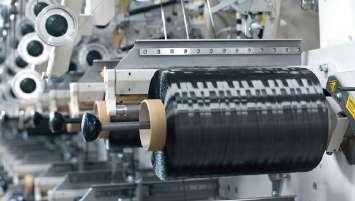
3 minute read
The textile industry: Overcoming the Covid-19 Aftermath - Dr. S N Modani
Dr. S N Modani
Advertisement
Managing Director & CEO, Sangam India Ltd.
The last two years of the pandemic have affected all industries worldwide, including the textile industry. With the imposed lockdown and unprecedented migration of workers, industry players faced a significant challenge in boosting their business economies and creating demand for their products. There was a huge gap in the supply chain which had adverse effects on the textile industry at the global level. However, now that the virus is slowing down due to an increase in vaccine intake, the industries are operating smoothly and gradually returning to normalcy. With other industries contributing significantly towards the emerging economy of the country, the Indian Textile Industry is also contributing consequently to its economic growth. The pre-covid scenario witnessed the contribution of 7% to the industry output, 2% towards GDP, 12% towards export earnings and accounted for 5% of the global trade in textiles and apparel. • Government schemes: With so much fluctuation in the overall industry, the Indian government left no chance to turn the crisis into an opportunity. With the introduction of the PLI scheme, the government has encouraged national industry players to boost domestic manufacturing in the country, keeping in mind, an incentive of 3-15% has been dedicated considering the incremental turnover of five years. Following the government’s subsequent implementation of various export-support initiatives, which resulted in an increase in both demand for and supply of garments and apparel, a global impact was observed. • Increase in Investments- Rise in exports has undoubtedly given the green signal to investments and investors. The industries have significantly started investing in foreign companies and have also expanded their international relations to a great extent. There has been a growth of 68% in Yarn business in the last one year, which indicates an optimistic impact on the overall Indian textile market. The growth in the demand from western markets has taken a back seat but is unlikely to affect the textile sector. • Technology: The world has undergone a tremendous transformation in technology. The virus made it a mandate to lessen the use of manpower and increase the utilisation of technology. Tech has always played a major role in the sector, but the last two years left the world with no substitute for it. The introduction of AI and block chains has reduced the effort, especially in the textile field. Earlier, the word technology was only associated with high-end computerized machines, but today even the industry will celebrate the birth of digital technology. Despite the fact that the installation cost of high-tech machines is high, the industry can still enjoy the economic benefits of cost reduction while concentrating on prodigious outputs with lower investments. • E-commerce platform: Talking about how technology has economically helped the industry with respect to the manufacturing process, it has also helped the industry to an enormous extent with respect to sales. Various ecommerce platforms have come together to support the Indian textile sector by having them on their platform and giving them an extensive reach while helping them to increase their target potential customers. The consumer base has been widely enhanced after the collaboration with such e-commerce platforms. This has not only helped the big industry players but has also leveraged the small-scale industries and motivated them to reach a global level to create a massive impact on their future generations. Consumers can now, with just one click, place an order for a substantial number of goods at absolutely no cost. This has all proved to be the most economical way of trading when the e-commerce industry was the only game changer during the pandemic. The industry has witnessed a growth of 10%-20% due to increased demand for apparel from the e-commerce sector after participating in the e-commerce game. • Sustainability: Sustainability has been the point of focus for a very long period of time. When the consumer spoke about economical sustainability, it was not only linked with the cost of the product but also spoke about the sustainability of the same. The textile industry is all about clothes and sustainable fashion is just one fancy name that was supported and created a 360 degree approach towards the demand for fibres which economically played well for the sector. Every industry faced its own set of challenges, but recovered quickly. Economic stability has nearly been jeopardised over the last two years due to significantly low demand. With seasonal changes, we can now expect some good numbers in the supply, giving the textile industry a chance to boom again.









